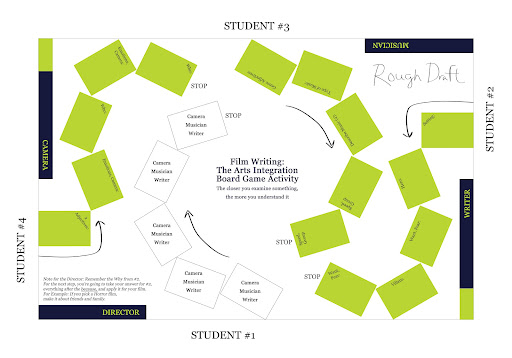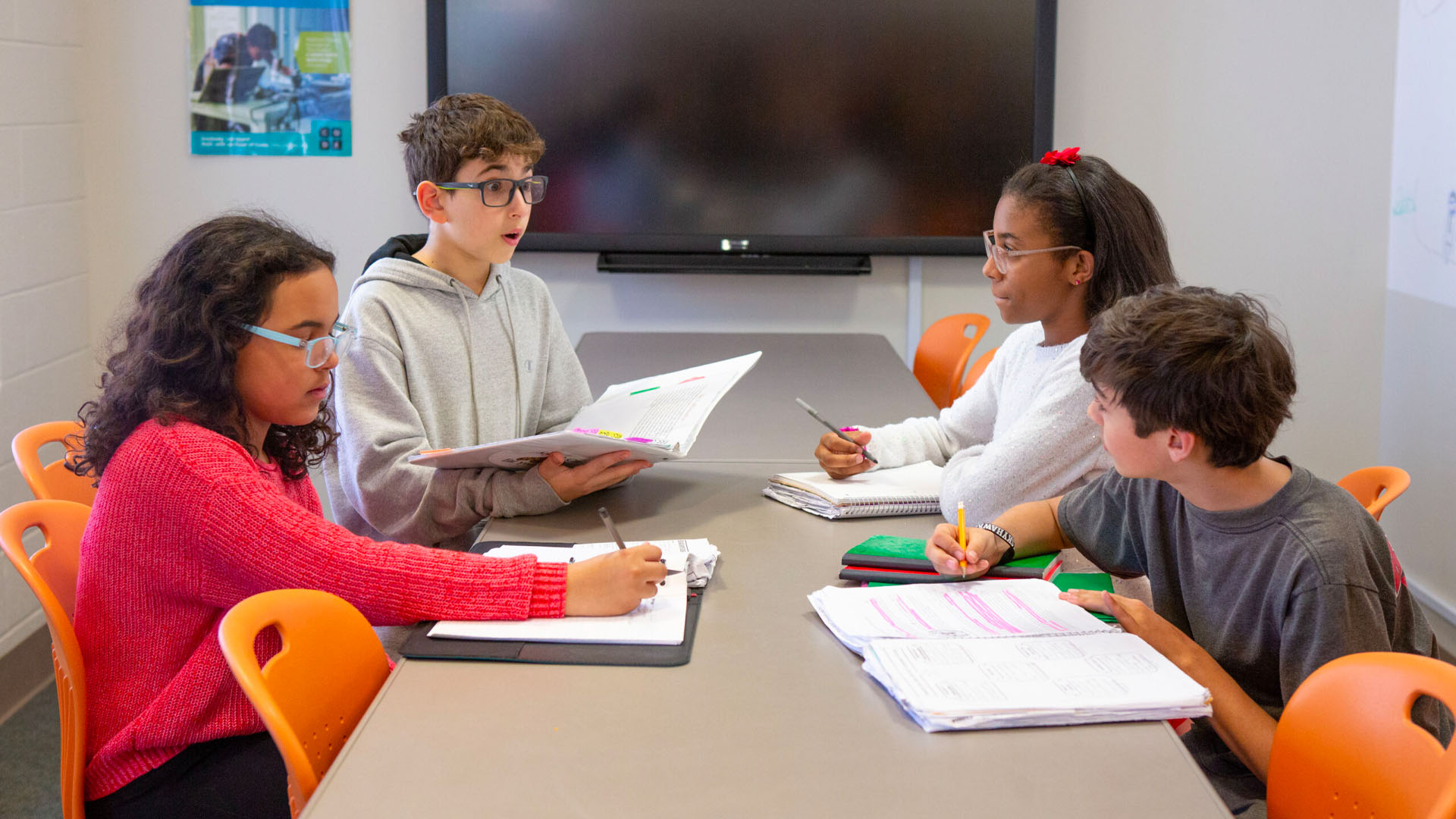In my arts integration class, I teach middle school students filmmaking with the help of English principles… to make an animated film. Because of time, funds, attention span, etc., we are doing everything but actually animating the film. So, it’s all the pre-production stuff.
In a class of 20-something students, I wanted to use all of their brainpower at the beginning, so I treated my big group like a team in a writer’s room, who breakdowns a story in general terms, providing structure, characters, transitions, etc. Then, the script is assigned to a writer who then takes the general information provided by the group and writes a specific story.
In my case, after each student picked their film department, I gave them assignments that specified the story, the universe it inhabited, and the script. One of my rules (for myself) was to identify and negate passive language, whether it’s something that’s written, for a design, or for a storyboard. The process, to a degree, came be gamified.
Film Writing:
The Arts Integration Board Game
Instruction & Activity
I’m William Bryant Rozier. My aforementioned project/film is called Dare Cycle.
This game represents a simplified version of what’s possible. So, feel free to curate and adapt this game to your needs.
With that said, there’s going to be a lot of writing and SEL teamwork opportunities.
“The closer you are to something, the more you understand it, whether it’s a friendship or a passage in a school essay.”

The underlying message for my students, at least I hope this resonates with them, is that the closer you are to something, the more you understand it, whether it’s a friendship or a passage in a school essay. That learning process takes effort, and for them it definitely does, but the results always come through for me. At the end of an assignment, and they see the results, the students are further experienced. They are becoming veterans of this world.
This game condenses and mirrors what my students have been doing for (going on) two years now.
The Board Game Activity: Prints and Notepads
To start, break your students in groups of 4, representing the film departments: Director, Writer, Camera, and Musician. If there’s an odd number, have two Directors instead of one. And you’ll have to move their desks together, or operate out of a cafeteria.
Speaking of which, in every group, have the students vote for who should be the Director (the Boss).
Materials:
- Brainstorming sheet, print for each student, 8.5×11 color (pdf download)
- Rough Draft sheet, print one copy, 11×17 color (pdf download)
- Assignments sheet, print one copy and cut into four pieces, 8.5×11 color (pdf download)
- A separate piece of paper for each student, writing utensils
Duration: 2 days (one for the Brainstorming and Rough Draft sheets each)
START AT THE BOTTOM: WE KEEP IT GENERAL (Day One)
Materials:
- Brainstorming sheet for each student
Everybody starts with the Brainstorming sheet and everybody starts, appropriately, at the bottom. This is where the general breakdown of the story happens, before each department provides specific details.
Outside of Question #1, each student works independently for the remaining questions. The idea here is for them to come up with their own stories to pitch to the Director, by answering general questions. The descriptions don’t have to be complex. They could be a sentence or two. But advise them to keep it short.
(The Director should also fill-out the sheet and can also choose their own story to direct.)

The most important question is #2 because it speaks to developing their POV, how they see the word. After picking their favorite type of film, also known as a genre, the students will have to think about why they like that sort of movie. Having a strong POV is most important for the Director, as the rest of the students are making the Director’s film. All of the decisions, hopefully, will be channeled through that POV.
The Director chooses the best pitch, the film they want to make the most. Then assigns the Job roles.
Now the students, who’ll probably have to switch their seats, need to find their respective Jobs on the Rough Draft sheet.
ROUGH DRAFT: NOW, WE GET SPECIFIC (Day Two)
Materials:
- Brainstorming sheet… now the Director keeps
- Rough Draft sheet… now placed in the middle of the students
- Assignments sheet… now cut into 4 pieces and given to corresponding departments
- A separate piece of paper for each student for notes, writing utensils

Each department now has their assignments, as well as a brief description of their department. And the assignments themselves are run through a heavy English-class filter. (I used adjectives a lot, but if you want to replace that descriptor with something else, feel free.) Again, the more you learn, the more you understand.
Everything, however, has to be run pass the Director, so this is where teamwork and patience come into play. The Director will have to learn patience to field all of the requests at the same time, because two students (or maybe, even, all three) could be finished at once. All the while, the Director must also ensure that their film, their POV, is being exercised, so their decisions have to be based on the film they want to make.
Each department will use their separate pieces of paper to write their answers on. Then once the Director signs off on an answer, the Camera, Musician, and Writer will jot them down on the Rough Draft sheet. Each student has five boxes.

For each box, the Director scratches off each department once they’re finished.
“There will be a whirlwind of activity so anticipate high volumes and containable mayhem.”
There will be a whirlwind of activity so anticipate high volumes and containable mayhem. Once all of the boxes have been filled in, the Director, with the new information provided, writes a new film description (from Question #3 on the Brainstorming sheet) based on all of the new specific directions provided. The new description can be written on their separate pieces of paper.
It might be a good idea for all of the students to write their own description, based on the information too.
THAT WAS FUN, WHAT NOW?
The obvious hope would be for some of the lessons to translate to English class, about how being specific (and not passive) has value. But I think it can be applied to other subjects, showing the lineage of math equations (starting at the bottom and working their way to calculus) or even science (how plants start from a seed and through specific processes become something more refined).
What more do they know about the story after the activity?
Resources
Please login or register to claim PGPs.
Alternatively, you may use the PGP Request Form if you prefer to not register an account.



